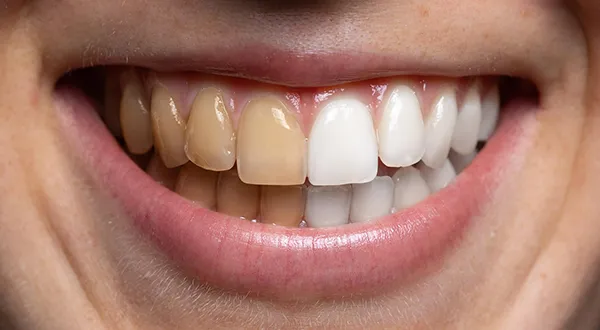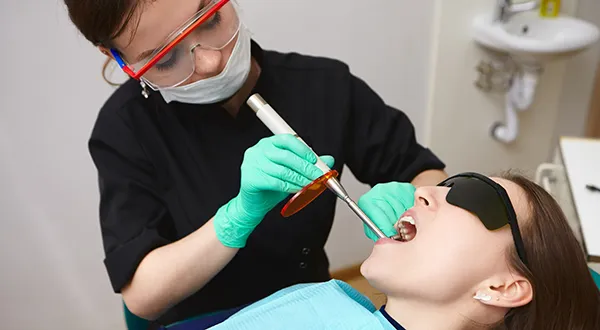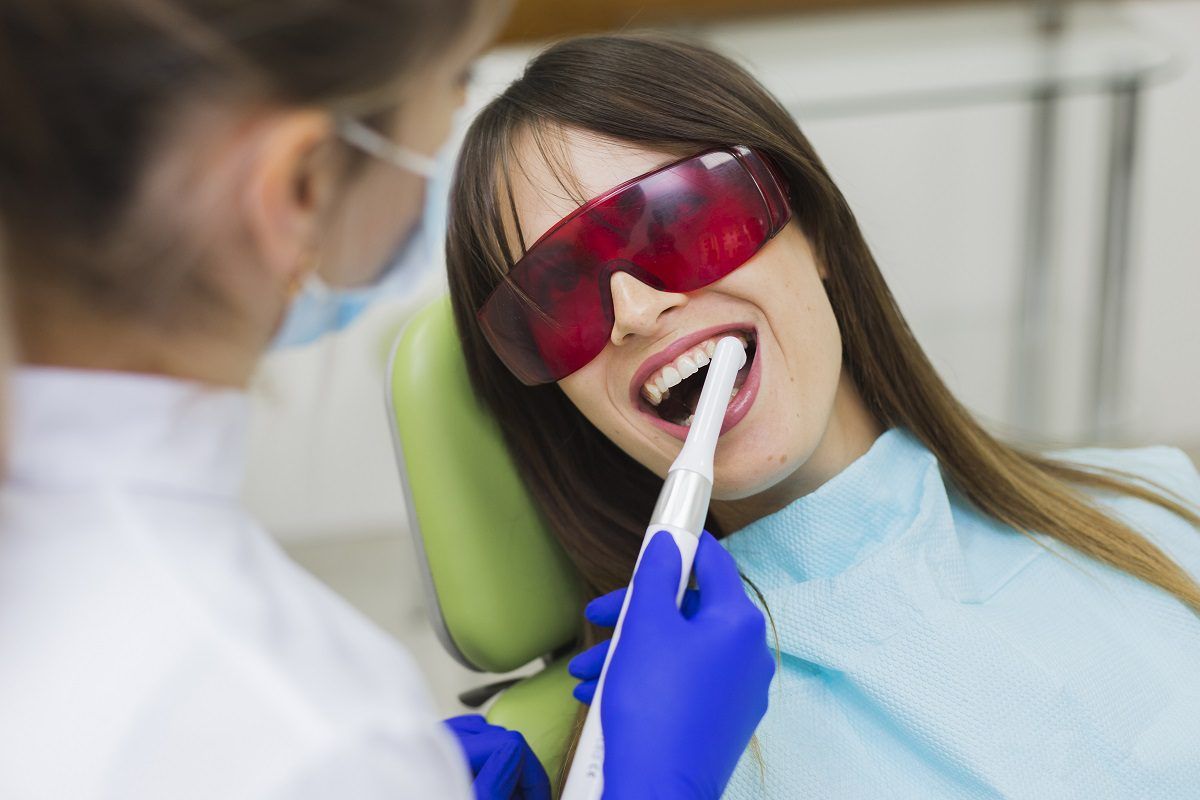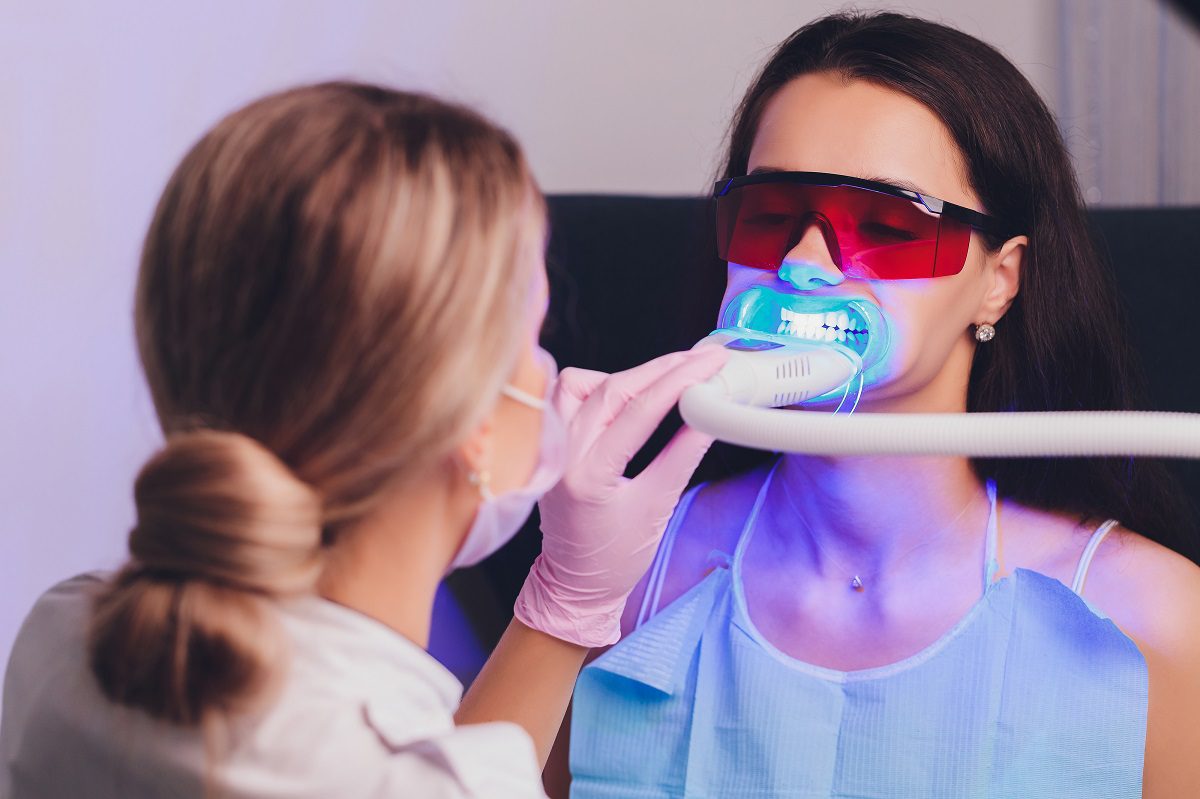Teeth Bleaching Risks and Potential Side Effects
Teeth bleaching may not be suitable for individuals with certain dental conditions, such as tooth decay, gum disease, or exposed tooth roots. Before starting any teeth bleaching procedure, individuals should undergo a comprehensive dental examination.

Teeth bleaching has become increasingly popular as individuals strive to achieve a brighter and more radiant smile. Though everyone wants a bright and beautiful smile, it is essential to approach teeth bleaching risks with a thorough understanding. Knowing the potential risks will help you take necessary precautions to protect your oral health and well-being.
Teeth bleaching is not without its challenges and uncertainties. While many individuals experience successful outcomes and minimal side effects, others may encounter complications that require attention and care. As with any cosmetic procedure, the process should be approached thoughtfully and with a clear understanding of its potential implications.
Throughout this exploration of teeth bleaching risks, we will also discuss strategies to minimize the likelihood of adverse effects.
Understanding the Risks and Side Effects of Teeth Bleaching
The teeth bleaching procedure aims to achieve a brighter smile by removing stains and discoloration from the teeth. While it can enhance one’s appearance and boost self-confidence, knowing the process’s potential risks and side effects is essential. Let’s get to know these.
- Tooth Sensitivity
Teeth bleaching involves using bleaching agents, typically hydrogen or carbamide peroxide. These agents help break down stains and discoloration on the teeth. During bleaching, these agents can penetrate the enamel and temporarily weaken it.
As a result, individuals may experience tooth sensitivity after teeth bleaching. Sensitivity is often triggered by hot, cold, or acidic foods and beverages, causing discomfort or pain. The severity and duration of sensitivity varies, but it typically subsides after a short period, usually within a few days or weeks.
- Gum Irritation
Bleaching agents used in teeth bleaching treatments can irritate the gums if they come into direct contact with them. Improper application of the bleaching agent or using ill-fitting trays may lead to the chemicals spilling onto the gum tissue. It can cause redness, inflammation, and discomfort in the gum area.
To minimize the risk of gum irritation, it is crucial for the dentist or dental professional to carefully apply the bleaching agent and protect the gums during the procedure. Custom-made trays and precise application help ensure that the bleaching agent primarily targets the teeth, reducing the likelihood of gum-related side effects.
- Uneven Results
Achieving consistent whitening results can be challenging in teeth bleaching, especially if teeth have varying degrees of discoloration. Some teeth may respond more effectively to the bleaching agents, resulting in a whiter appearance, while others may show less improvement. This disparity can lead to an uneven or blotchy appearance of the teeth after the treatment.
Professional dental supervision is essential to overcome this challenge. Dentists can assess the level of discoloration on each tooth and tailor the treatment accordingly. By customizing the procedure based on individual needs, dental professionals can work towards achieving a more even and aesthetically pleasing outcome.

- Temporary Results
Teeth bleaching provides temporary results, and the brightness of the teeth may diminish over time. Diet and habits like smoking or consuming staining beverages play a significant role in decreasing teeth bleaching results. These substances can gradually cause new teeth stains, reducing the whitening effects’ longevity.
For maintaining teeth bleaching results for extended periods, avoiding or minimizing the consumption of staining substances and practicing good oral hygiene are crucial. Regular dental check-ups and professional cleanings can also help preserve the whiteness of the teeth.
- Tooth Damage
Excessive and improper use of over-the-counter bleaching products or home remedies can harm teeth and gums. When used excessively or without proper guidance, the bleaching agents can damage the enamel, leading to tooth sensitivity and increased vulnerability to dental problems.
Dentists can recommend appropriate products and treatment schedules that are safe and effective for individual needs, minimizing the risk of tooth damage.
- Allergic Reactions
Some individuals may be sensitive or allergic to the chemicals used in teeth-bleaching products, such as hydrogen or carbamide peroxide. Allergic reactions can range from mild oral discomfort, including gum irritation and tooth sensitivity, to more severe symptoms like lips, tongue, or throat swelling and even difficulty breathing.
Before undergoing any teeth bleaching treatment, it is crucial to inform the dentist about any known allergies or sensitivities to ensure the selected bleaching agents are safe for use. Dentists can recommend alternative treatments or adjust the procedure to accommodate individual sensitivities.
“Tooth sensitivity is one of the most reported side effects of teeth bleaching, affecting around 60% of individuals undergoing the treatment. Gum irritation and soreness occur in 15-20% of teeth bleaching patients”.
- Enamel Erosion
Frequent and excessive bleaching can weaken the enamel over time. The chemicals in the bleaching agents can erode the enamel’s mineral content, making the teeth more susceptible to damage and decay. As the enamel wears down, teeth may become more sensitive and prone to cavities.
Following dental professionals’ recommendations on the frequency and duration of teeth bleaching treatments is crucial. Giving the teeth sufficient time to recover between treatments helps preserve the enamel’s strength and integrity.
- Pre-existing Dental Issues
Teeth bleaching may not be suitable for individuals with certain dental conditions, such as tooth decay, gum disease, or exposed tooth roots. These pre-existing issues can make teeth more vulnerable to sensitivity and irritation during bleaching.
Before starting any teeth bleaching procedure, individuals should undergo a comprehensive dental examination. This evaluation helps identify and address any underlying dental problems, ensuring that teeth bleaching is safe and appropriate for the individual’s oral health.
Remember, teeth bleaching is not suitable for everyone, and it is vital to consult with a dentist or dental professional to determine if it is the right option for you.
Strategies to Minimize Teeth Bleaching Risks and Side Effects
Minimizing the side effects and risks of teeth bleaching involves taking proactive measures and following best practices before and after the treatment. Here are some essential tips to help you achieve a successful and safe teeth bleaching experience:
- Professional Supervision:
Choose a reputable dental professional for teeth bleaching. A qualified dentist can evaluate your dental health, determine the most suitable bleaching method for your teeth, and monitor the process to minimize potential risks.
- Dental Examination:
Undergo a comprehensive dental examination before starting the teeth bleaching procedure. It will help identify and address any pre-existing dental issues, ensuring that your teeth are in good condition for the treatment.
- Customized Treatment:
Opt for custom-made bleaching trays and personalized treatment plans. A tailored approach can reduce gum irritation risk and ensure even whitening results, targeting specific areas that require attention.

- Follow Instructions:
Strictly follow the instructions provided by your dental professional or the product manufacturer. Overusing or misusing bleaching agents can lead to tooth sensitivity and enamel damage.
- Avoid DIY Remedies:
Refrain from using DIY teeth bleaching remedies, especially those without professional guidance. Over-the-counter products may not be as effective or safe as professional treatments.
- Gradual Approach:
Consider a gradual teeth bleaching approach. Gradual bleaching allows your teeth to adjust to the treatment, reducing sensitivity and minimizing the risk of enamel erosion.
- Limit Staining Substances:
Reduce or avoid the consumption of staining substances such as coffee or tea. These can counteract the whitening effects and lead to discoloration.
- Practice Good Oral Hygiene:
Maintain a regular oral hygiene routine, including brushing, flossing, and using mouthwash. It will maximize the longevity of the whitening results.
- Use Desensitizing Products:
If you experience tooth sensitivity after teeth bleaching, use desensitizing toothpaste or gel recommended by your dentist. These products can help alleviate discomfort and sensitivity.
- Schedule Follow-up Visits:
Attend follow-up visits as recommended by your dental professional. These visits allow the dentist to assess your progress, address concerns, and ensure that your teeth and gums remain healthy.
- Avoid Frequent Bleaching:
Avoid excessive or frequent bleaching sessions, which can weaken the enamel and increase the risk of sensitivity and tooth damage. Follow your dentist’s recommendation for the best results.
- Consider Alternatives:
Discuss alternative teeth whitening options with your dentist if you have a history of allergic reactions or significant sensitivity.
Final Words
Teeth bleaching is a widely sought-after cosmetic dental procedure, but it is essential to be aware of its potential risks. Seeking professional dental supervision and following post-treatment care instructions can help minimize these risks and safely achieve a brighter, more confident smile.
Contact your dentist in Walnut Creek, Dr. Tiziana Procopio Towle, DDS, at Procopio Dental Office to learn more about The risks of Teeth Bleaching and its potential side effects.
Resource:
Maintaining Your Teeth Bleaching Results: Tips for Good Oral Hygiene
*This media/content or any other on this website does not prescribe, recommend, or prevent any treatment or procedure. Therefore, we highly recommend that you get the advice of a qualified dentist or other medical practitioners regarding your specific dental condition*
Get to know us
The best and gentle Dentists and Team Member of Procopio Towle Dental Office are dedicated to providing top quality dental care to patients in Walnut Creek the surrounding San Francisco Bay Area.
Meet Our Dentist



